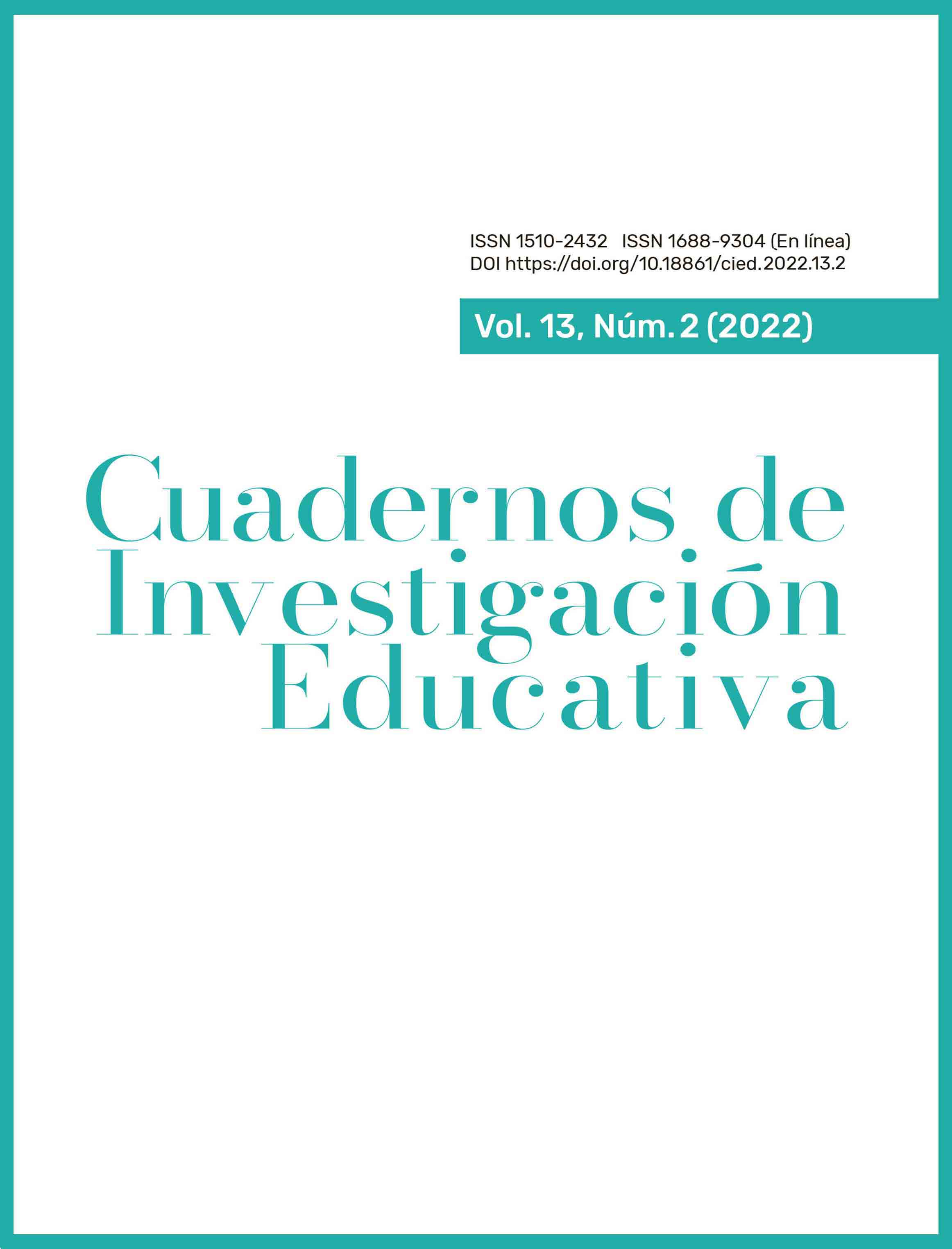Conceptual Metaphors: an Insight into Teachers’ and Students’ EFL Learning Beliefs
DOI:
https://doi.org/10.18861/cied.2022.13.2.3176Keywords:
conceptual metaphor, language learning beliefs, language learning strategies, EFL, teacher cognitionAbstract
Teachers and students hold their own language learning beliefs about English as a Foreign Language (EFL). In the classroom, students’ and teachers’ beliefs interact, which might result in either tension or opportunities for change. Considering that it might be difficult to evoke some of the participants’ beliefs, this study opted to analyze conceptual metaphors as an indirect way to elicit them. Metaphors are part of our thoughts and actions and, sometimes, they are the only way of organizing and expressing our experiences coherently (Lakoff & Johnson, 2003). This study analyzed, through metaphor analysis, how students’ beliefs about learning EFL relate to the teacher’s selection and use of language learning strategies (LLS) in the classroom. The study occurred at an English Institute in Montevideo, Uruguay, between October and November 2018. The methodology of this multiple case study was qualitative. The participants were three EFL teachers and four groups of students ranging from basic to advanced level. Students were asked to respond to the following prompt with a metaphor: “For me, learning English as a foreign language is (like)… because…”. Then they wrote a letter advising a future EFL student. Teachers answered a structured interview in which they provided a metaphor describing the work with their groups. The most heterogeneous group in terms of age was selected for a follow-up structured interview. Results indicate that metaphors not only shed light upon how students perceive their learning process, but also encourage reflection. The study also found that several factors influence teachers’ selection of language learning strategies, including the role of international exams. We can conclude that visible interactions that happen in class are like the tip of an iceberg - beliefs lie hidden from view.
Downloads
References
Armstrong, S.L. (2015). Retrospective metaphor interviews as an additional layer in elicited metaphor investigations: bridging conceptualizations and practice. In W. Wan & G. Low (Eds.), Elicited metaphor analysis in educational discourse (pp. 119-138). John Benjamins.
Barcelos, A. M. F. (2000). Understanding teachers' and students' language learning beliefs in experience: A Deweyan approach (Unpublished doctoral dissertation). The University of Alabama.
Barcelos, A. M. F. (2003a). Researching beliefs in SLA: A critical review. In P. Kalaja & A.M.F. Barcelos (Eds.), Beliefs About SLA: New Research Approaches (pp. 7-33). Kluwer Academic Publishers.
Barcelos, A. M. F. (2003b). Teachers’ and students’ beliefs within a Deweyan framework: Conflict and influence. In P. Kalaja & A.M.F. Barcelos (Eds.), Beliefs about SLA: New Research Approaches (pp. 171-199). Kluwer Academic Publishers.
Barnard, R., & Burns, A. (Eds.). (2012). Researching language teacher cognition and practice: International case studies (New Perspectives on Language and Education). Multilingual Matters.
Borg, S. (2003). Teacher cognition in language teaching: A review of research on what language teachers think, know, believe, and do. Language Teaching, 36(2), 81-109.
Cameron, L., & Low, G.D. (1999). Metaphor. Language Teaching, (32), 77-96.
Dufva, H. (2003). Beliefs in dialogue: a Bakhtinian view. In P. Kalaja & A.M.F. Barcelos (Eds.), Beliefs about SLA: New Research Approaches (pp. 131-151). Kluwer Academic Publishers.
Ellis, R. (2008). Learner beliefs and language learning. ASIAN EFL Journal, 10(4), 7-24.
Fang, S. (2015). College EFL learners’ metaphorical perceptions of English learning. The Journal of Asia TEFL, 12(3), 61-79. http://dx.doi.org/10.18823/asiatefl.2015.12.3.3.61
Flick, U. (2015). El diseño de la investigación cualitativa. Morata.
Freeman, D. (2002). The hidden side of the work: Teacher knowledge and learning to teach. A perspective from North American educational research on teacher education in English language teaching. Language Teaching, 35(1), 1-13.
Hernández Sampieri, R. (2014). Metodología de la investigación. Mac Graw Hill.
Horwitz, E. K. (1985). Using student beliefs about language learning and teaching in the foreign language methods course. Foreign Language Annals, 18, 333-340.
Horwitz, E. K. (1988). The beliefs about language learning of beginning university foreign language students. The Modern Language Journal, 72(3), 283-294.
Hosenfeld, C. (2003). Evidence of Emergent Beliefs of a Second Language Learner: A Diary Study. In P. Kalaja & A. M. F. Barcelos (Eds.), Beliefs about SLA: New Research Approaches (pp.37-54). Kluwer Academic Publishers.
Johnson, K. E. (1995). Understanding communication in second language classrooms. Cambridge University Press.
Kalaja, P., Barcelos, A. M. F., Aro, M., & Ruohotie-Lyhty, M. (2015). Beliefs, agency and identity in foreign language learning and teaching. Palgrave Macmillan.
Lakoff, G. (1993). The Contemporary Theory of Metaphor. In A. Ortony (Ed.), Metaphor and thought. (2nd ed., pp. 202-251). Cambridge University Press.
Lakoff, G., & Johnson, M. (2003). Metaphors we live by. Afterword. University of Chicago Press.
Low, G. (2015). A practical validation model for researching elicited metaphor. In W. Wan & G. Low (Eds.), Elicited metaphor analysis in educational discourse (pp. 15-37). John Benjamins.
Marrero, J., Rodríguez, A., & Rodrigo, M. J. (1993). Las teorías implícitas: una aproximación al conocimiento cotidiano. Visor.
Seung, E., Park, S., & Jung, J. (2015). Methodological approaches and strategies for elicited metaphor-based research: a critical review. In W. Wan & G. Low (Eds.), Elicited metaphor analysis in educational discourse (pp. 39-64). John Benjamins.
Soriano, C. (2012). La metáfora conceptual. In I. Ibarretxe-Antuñano & J. Valenzuela (Eds.), Lingüística Cognitiva (pp. 87-109). Anthropos.
Stake, R. E. (1999). Investigación con estudio de casos. Morata.
Wan, W., & Low, G. (2015). Introduction. In W. Wan & G. Low (Eds.), Elicited metaphor analysis in educational discourse (pp. 1-12). John Benjamins.
Wan, W. (2015). Developing critical thinking in academic writing through a metaphor elicitation technique: an exploratory study. In W. Wan & G. Low (Eds.), Elicited metaphor analysis in educational discourse (pp. 213-237). John Benjamins.
Zambon, N. (2019). ¿Qué piensan los docentes y los estudiantes del aprendizaje del inglés como lengua extranjera?: un estudio sobre creencias a partir de la metáfora conceptual. Unpublished master's thesis. Universidad ORT Uruguay. Sistema de Bibliotecas de la Universidad ORT Uruguay.






